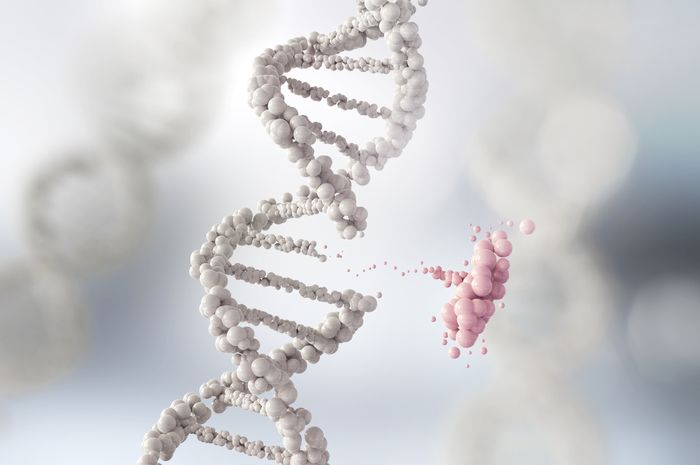Hearing loss is a sensory disorder that is often found, about one in a thousand births. Hearing loss can be caused by genetic factors, environmental factors, and the interaction of these two factors. Genetic factors play about 50 – 75 percent as a cause of hearing loss.
Hearing loss related to genetic factors (congenital hearing loss) can be found in two forms: syndromic disorders and non-syndromic disorders. About 70 percent of hereditary hearing loss is in the form of non-syndromic disorders.
One gene is closely related to congenital deafness is the Gap Junction Protein Beta 2 (GJB2) gene. The GJB2 gene is important in chromosome 13q.12 and encodes the connexin 26 protein. Connexin 26 is a gap junction in epithelial cells and connective tissue responsible for maintaining the electrical potential in the cochlea which plays a role in maintaining the balance of K + ions used to deliver sound stimulation to hair cells during the hearing transduction process.
GJB2 gene mutation is the main cause of congenital deafness because due to the modification of codons that encode the connexin 26 protein, the stability of mRNA will be affected. Worldwide, about 50 percent of the GJB2 gene mutation causes nonsyndromic recessive congenital deafness.
Hearing loss is very influential in the development of language skills so that it can interfere with developments in social life and children’s education. Thus, understanding of the molecular mechanisms associated with the emergence of congenital hearing loss plays an important role in early detection and aspects of treatment.
Genetic analysis of congenital hearing loss is an important tool to track hereditary disease in patients as early as possible so that it can be treated immediately. Furthermore, it also tracks hearing loss in family members of sufferers and can be used as premarital screening.
Delay in the diagnosis of hearing loss causes a large impact on the development of children’s thinking and ability to communicate. It will greatly affect the psychosocial development of children in the future, for example, withdrawing from the social environment.
In Indonesia, there are not many researches conducted on the relationship between genetic mutations and the occurrence of congenital deafness, although the number of congenital deaf patients in Indonesia is quite high. In 1994-1996, the results of a congenital hearing loss survey in Indonesia were 0.1 percent, and in 2005 it increased to around 0.22 percent. In this study, the detection of GJB2 gene mutations in congenital deaf patients in SLB type B Surabaya.
The subjects of this study were sufferers of congenital hearing loss with a very severe degree of deafness from SLB type B in Surabaya. After screening, there were 22 people participating in this research. The design used in this study was analytical observation. In this study, 5 ml venous blood samples were taken, and then isolation of Peripheral Blood Mononuclear Cell (PMBC) was performed. Then extraction was done, DNA amplification of the GJB2 gene by PCR technique, and followed by sequencing. Laboratory tests on research subjects were carried out at the Institute of Tropical Disease, Universitas Airlangga, Surabaya.
This study also collected interview-questionnaire data regarding gender, age, and the existence of a history of hearing loss in the families of the study subjects.
The result of the study showed that sufferers of congenital hearing loss in SLB type B Surabaya with a family history of hearing loss were fewer in number, around 22.73 percent, compared to those who do not have a family history of hearing loss.
In patients with congenital deafness in Surabaya, there was no GJB2 gene mutation (rs-80338939). Gene mutations can be influenced by demographic area factors and ethnic factors. In this study, it was found that there were changes or variations in the nucleotide G to A in the order of 8473 of GJB2 gene that changed the encoded amino acid (valine to leucine) which was thought to be related to the occurrence of congenital deafness.
The study concluded that there was no connection between GJB2 gene mutations (rs-80338939) and the incidence of congenital hearing loss in SLB type B Surabaya, and the prevalence of GJB2 gene mutations according to rs-80338939 was 0 percent. (*)
Author: Gwenny Ichsan Prabowo
Details of this study available at: http://www.indianjotol.org with the title Detection of Single-Nucleotide Polymorphism Gap Junction Protein Beta-2 Genes in Deaf Schoolchildren of Javanese Population in Surabaya, Indonesia?





